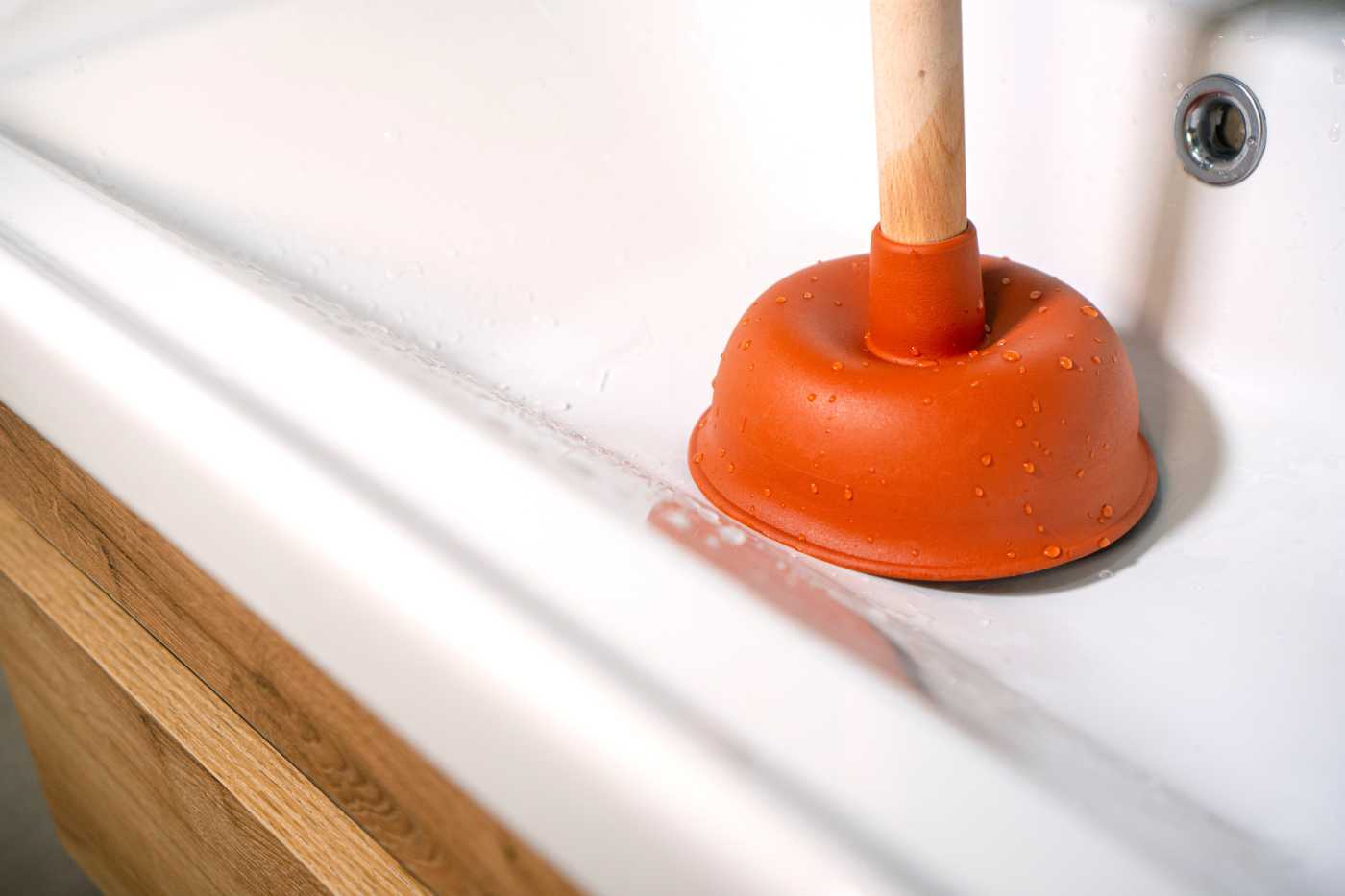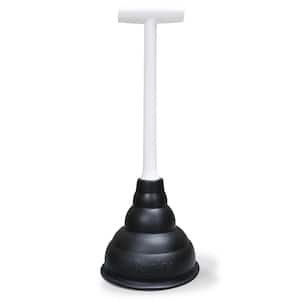Here further down you can discover lots of reliable points on the subject of Tips on How to Effectively Use a Plunger.

Introduction
Proper maintenance of home drains pipes is crucial for protecting against clogs and making sure smooth water circulation. One of the key tools in every property owner's toolkit is the plunger, along with numerous drain cleansers made to take on persistent obstructions effectively. This short article discovers how to use plungers and drain cleaners successfully to keep your drains pipes moving openly.
Section 1: Comprehending Plungers
Kinds of Plungers
There are several sorts of bettors readily available, each made for different types of drains pipes and obstructs. One of the most usual kinds consist of mug bettors, flange plungers, and accordion plungers.
How Plungers Work
Plungers work on the concept of creating stress and suction to dislodge clogs. When properly used over a drainpipe, they produce a vacuum cleaner that can take out debris or break up blockages.
Selecting the Right Plunger
Picking the right plunger depends upon the sort of drainpipe and the nature of the clog. Cup bettors are perfect for sinks and tubs, while flange bettors are much better suited for bathrooms because of their layout.
Usual Mistakes with Plungers
Preventing these errors makes certain effective plunging: improper seal around the drain, insufficient force, and not clearing bordering particles.
Area 2: Making Use Of Plungers Properly
Prep work
Prior to plunging, guarantee the plunger covers the drainpipe entirely and develops a tight seal. Clear any noticeable particles around the drain opening.
Method
Start with mild plunging activities to construct suction. Increase stress gradually, making use of a steady rhythm. Repeat as required up until the drain clears.
Troubleshooting Tips
If diving does not function, try readjusting the seal, applying oil jelly for a better seal, or making use of a different sort of bettor.
Section 3: Recognizing Drainpipe Cleaners
Sorts Of Drain Cleansers
Drain pipes cleaners can be chemical or enzymatic. Chemical cleansers make use of solid chemicals to dissolve blockages, while chemical cleansers make use of all-natural enzymes to break down organic matter.
How Drain Cleansers Job
Chemical cleansers respond with blockages to liquify them, while chemical cleansers break down organic materials like hair and grease without hurting pipelines.
Security Factors to consider
Always use gloves and eye protection when using chemical drainpipe cleansers. Make sure appropriate ventilation and follow manufacturer guidelines meticulously.
Eco-Friendly Alternatives
Take into consideration utilizing vinegar and baking soft drink or enzyme-based cleaners for environmentally friendly options that are much safer for pipes and the setting.
Section 4: Making Use Of Drain Cleaning Company Successfully
Application Strategies
Pour chemical cleaners directly right into the drain opening. Enable them to work for the recommended time before purging with warm water. Chemical cleansers must sit overnight.
Precautions
Avoid blending different sorts of cleaners, as this can generate poisonous fumes. Never utilize chemical cleansers along with a bettor, as spilling can happen.
Taking Care Of Persistent Clogs
For persistent blockages, think about utilizing a plumbing snake or calling a professional plumbing to avoid damage to pipes.
Verdict
Finally, recognizing exactly how to use plungers and drainpipe cleaners efficiently is essential for keeping healthy and balanced plumbing systems. By picking the right tools and techniques, home owners can deal with small blockages and avoid significant plumbing concerns down the line.
How to Use a Plunger to Unclog a Drain
The humble plunger is a simple yet effective tool for breaking clogs in sinks, tubs and toilets. This handy tool is easy to use. You can make the most of its power if you understand how it works. Ready to dive in? Here’s what you need to know.
Safety First!
Never use a plunger with drain chemicals. Water will splash as you work, and the chemicals can spatter, burning skin and eyes. It’s a good idea to use rubber gloves and wear safety goggles when you work on a clog.
Choose the Right Tool for the Job
Plungers come in two different styles. Sinks, bathtubs and showers require a cup plunger. Like its name suggests, the rubber end is shaped like a cup. Use a flange plunger on toilets. These plungers have a rubber funnel extending from the cup. A plunger needs to be big enough to cover the drain.
Ready, Set, Plunge!
Coat the rim: Coat the plunger rim with petroleum jelly. This helps make a better seal.
Block outlets: Hold a wet rag over nearby outlets such as the overflow vent or the drain in a second sink.
Release air: Insert the plunger at an angle into the water. Water will displace air in the cup. A water-filled cup is more forceful than one filled with air.
Keep the plunger upright: Hold the plunger perpendicular to the drain. Use fast, forceful strokes, but make the first stroke gentle. The first stroke can create a splash if the cup still contains air. Thrust the plunger 15 to 20 times.
Snap off the plunger: The final stroke should be a strong upward motion that ends when the plunger snaps off the drain.
Repeat the process: you may need to repeat this sequence several times. When the water drains away, your work is done. High-five! https://plumbernw.com/blog/how-to-use-a-plunger-to-unclog-a-drain/

Application Strategies
Pour chemical cleaners directly right into the drain opening. Enable them to work for the recommended time before purging with warm water. Chemical cleansers must sit overnight.
Precautions
Avoid blending different sorts of cleaners, as this can generate poisonous fumes. Never utilize chemical cleansers along with a bettor, as spilling can happen.
Taking Care Of Persistent Clogs
For persistent blockages, think about utilizing a plumbing snake or calling a professional plumbing to avoid damage to pipes.
Verdict
Finally, recognizing exactly how to use plungers and drainpipe cleaners efficiently is essential for keeping healthy and balanced plumbing systems. By picking the right tools and techniques, home owners can deal with small blockages and avoid significant plumbing concerns down the line.
How to Use a Plunger to Unclog a Drain
The humble plunger is a simple yet effective tool for breaking clogs in sinks, tubs and toilets. This handy tool is easy to use. You can make the most of its power if you understand how it works. Ready to dive in? Here’s what you need to know.
Safety First!
Never use a plunger with drain chemicals. Water will splash as you work, and the chemicals can spatter, burning skin and eyes. It’s a good idea to use rubber gloves and wear safety goggles when you work on a clog.
Choose the Right Tool for the Job
Plungers come in two different styles. Sinks, bathtubs and showers require a cup plunger. Like its name suggests, the rubber end is shaped like a cup. Use a flange plunger on toilets. These plungers have a rubber funnel extending from the cup. A plunger needs to be big enough to cover the drain.
Ready, Set, Plunge!
Coat the rim: Coat the plunger rim with petroleum jelly. This helps make a better seal. Block outlets: Hold a wet rag over nearby outlets such as the overflow vent or the drain in a second sink. Release air: Insert the plunger at an angle into the water. Water will displace air in the cup. A water-filled cup is more forceful than one filled with air. Keep the plunger upright: Hold the plunger perpendicular to the drain. Use fast, forceful strokes, but make the first stroke gentle. The first stroke can create a splash if the cup still contains air. Thrust the plunger 15 to 20 times. Snap off the plunger: The final stroke should be a strong upward motion that ends when the plunger snaps off the drain. Repeat the process: you may need to repeat this sequence several times. When the water drains away, your work is done. High-five! https://plumbernw.com/blog/how-to-use-a-plunger-to-unclog-a-drain/

I am just very eager about A Guide to Plungers (and How to Use Them) and I hope you enjoyed the entire article. Are you aware of another person who is curious about Here's How to Correctly Use a Toilet Plunger? Please feel free to promote it. Thanks for your time invested reading it.
Get A Free Quote